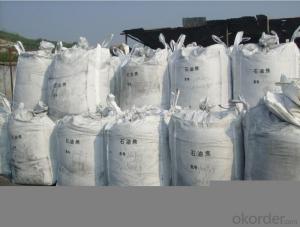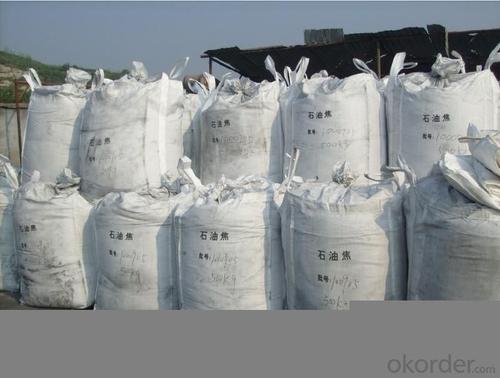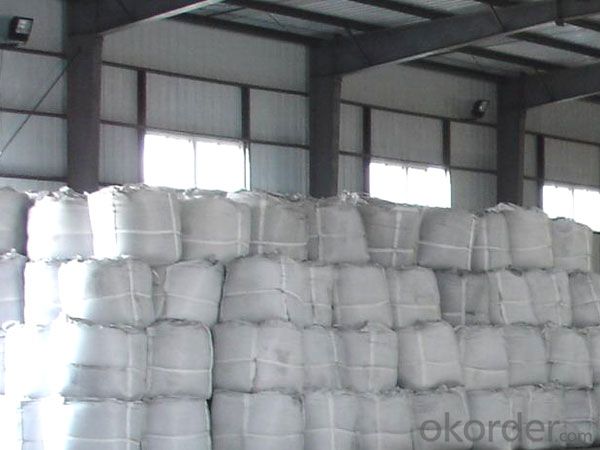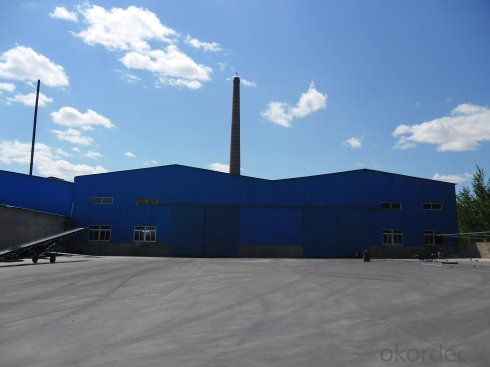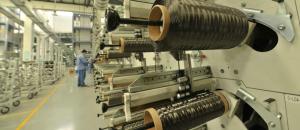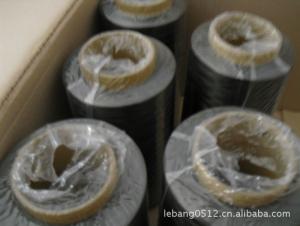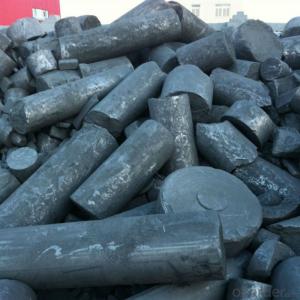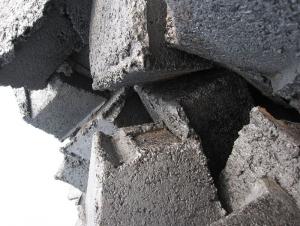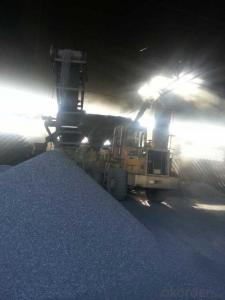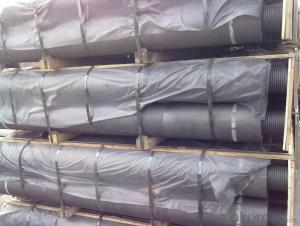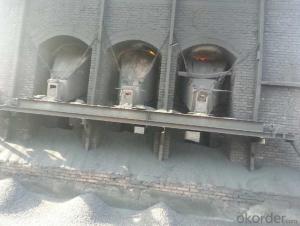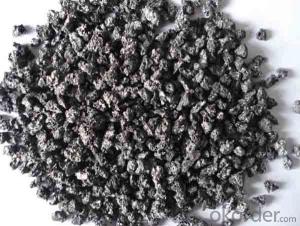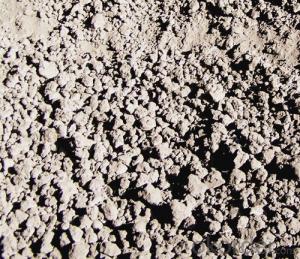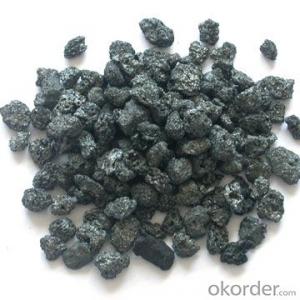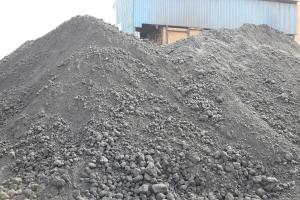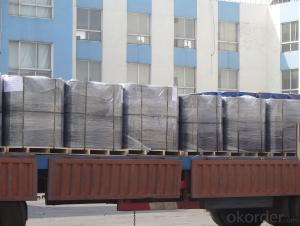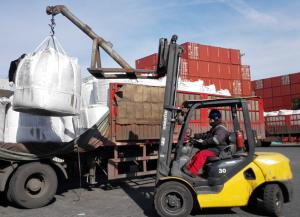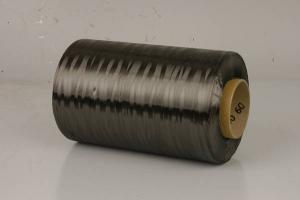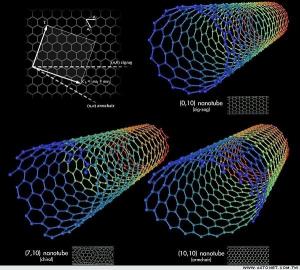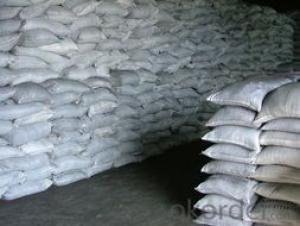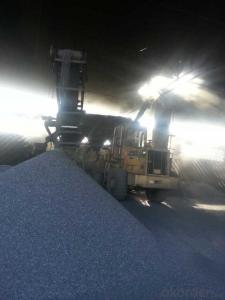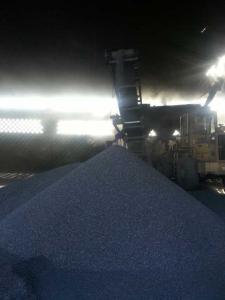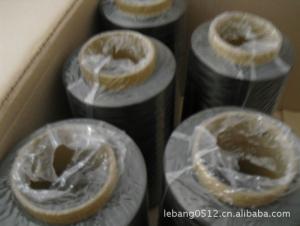Low Sulphur Calcined Petroleum Coke of CNBM in China
- Loading Port:
- Tianjin
- Payment Terms:
- TT OR LC
- Min Order Qty:
- 1 m.t.
- Supply Capability:
- 10000000 m.t./month
OKorder Service Pledge
OKorder Financial Service
You Might Also Like
1.Structure of Calcined Petroleum Coke Description
Calcined Petroleum Coke is made from raw petroleum coke,which is calcined in furnace at a high temperature(1200-1300℃).CPC/Calcined Petroleum Coke is widely used in steelmaking,castings manufacture and other metallurgical industry as a kind of recarburizer because of its high fixed carbon content,low sulfur content and high absorb rate.Besides,it is also a best kind of raw materials for producing artifical graphite(GPC/Graphitized Petroleum Coke) under the graphitizing temperature(2800℃).
2.Main Features of the Calcined Petroleum Coke
High-purity graphitized petroleum coke is made from high quality petroleum coke under a temperature of 2,500-3,500°C. As a high-purity carbon material, it has characteristics of high fixed carbon content, low sulfur, low ash, low porosity etc.It can be used as carbon raiser (Recarburizer) to produce high quality steel,cast iron and alloy.It can also be used in plastic and rubber as an additive.
3. Calcined Petroleum Coke Images
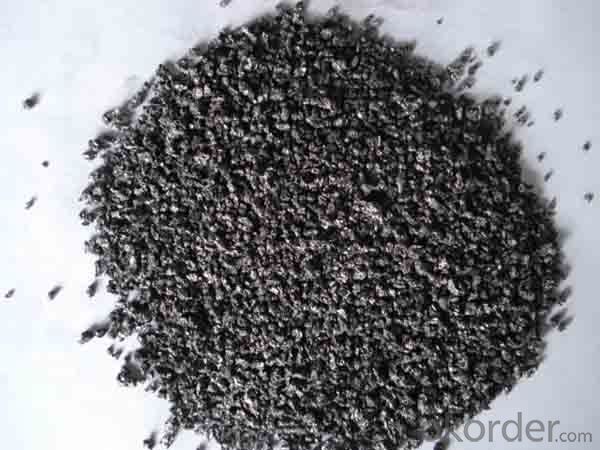
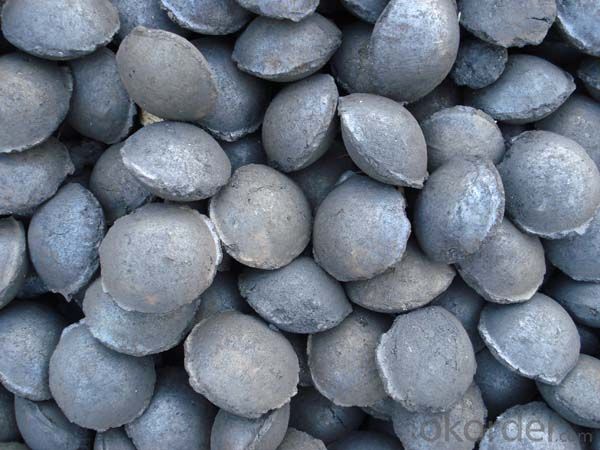
4. Calcined Petroleum Coke Specification
Item NO. | Chemical Composition | ||||
FC(Fixed Carbon) | Ash | VM(Volatile Matter) | S(Sulphur) | Moisture | |
GH-CPC-1 | 98.5% min | 0.5% max | 0.5% max | 0.3% max | 0.5% max |
GH-CPC-2 | 98.5% min | 0.5% max | 0.5% max | 0.5% max | 0.5% max |
GH-CPC-3 | 98.5% min | 0.7% max | 0.8% max | 0.8% max | 0.5% max |
GH-CPC-4 | 98.5% min | 0.7% max | 0.8% max | 1.2% max | 0.5% max |
Size | 0-1mm, 1-3mm, 1-5mm, 3-8mm, 1-10mm, or at customers’ option | ||||
5.FAQ of Calcined Petroleum Coke
1). Q: Are you a factory or trading company?
A: We are a factory.
2). Q: Where is your factory located? How can I visit there?
A: Our factory is located in ShanXi, HeNan, China. You are warmly welcomed to visit us!
3). Q: How can I get some samples?
A: Please connect me for samples
4). Q: Can the price be cheaper?
A: Of course, you will be offered a good discount for big amount.
- Q: What are the different types of carbon-based polymers?
- There are several different types of carbon-based polymers, including polyethylene, polypropylene, polystyrene, polyvinyl chloride (PVC), and polyurethane.
- Q: They include a cementite, two cementite, three cementite, eutectic cementite and eutectoid cementite, and compare their temperature, composition and morphology
- A: cementite in iron graphite phase, carbon content more than 4.3%, in L (Fe + Fe3C) two-phase region crystallization of Fe3C as a primary cementite formation temperature in the eutectic temperature (1148 DEG C) above, morphology in large sheets (during eutectic organization). Carbon content from 4.3% to 6.69% is the typical composition range.
- Q: How does carbon impact the prevalence of droughts?
- Droughts are significantly influenced by carbon, specifically in the form of carbon dioxide (CO2) emissions. The prevalence of droughts is attributed to the increased levels of carbon in the atmosphere, which contribute to global warming and impact climate patterns globally. Human activities, such as the burning of fossil fuels and deforestation, release carbon dioxide into the atmosphere. This carbon dioxide acts as a greenhouse gas, trapping heat from the sun and causing the Earth's temperature to rise. As the global temperature increases, precipitation patterns and evaporation rates undergo changes. Warmer temperatures accelerate evaporation, leading to more water evaporating from lakes, rivers, and soil. This increased evaporation, combined with altered precipitation patterns, results in drier conditions and reduced water availability in certain regions. Furthermore, the rising temperatures contribute to the intensification of the water cycle, leading to more extreme weather events. These events include more frequent and severe droughts, as well as intense rainfall in some areas, increasing the risk of floods. Moreover, carbon emissions also impact atmospheric circulation patterns, such as the weakening of the jet stream. The jet stream plays a crucial role in directing weather systems across the globe, including rain-bearing weather fronts. When it weakens, weather systems become stagnant, resulting in prolonged drought periods in certain regions. In summary, human activities that increase carbon levels in the atmosphere have a direct influence on global warming and climate change. These changes in climate patterns and atmospheric circulation, along with the intensification of the water cycle, significantly affect the occurrence and severity of droughts worldwide. Therefore, it is essential to reduce carbon emissions and address climate change in order to minimize the impacts of droughts on ecosystems, agriculture, and human populations.
- Q: When is gold resistance better? When will carbon resistance be better?
- Metal film resistance, high precision, overload capacity, high temperature coefficient, but the price is also higher. Commonly used in some demanding or more accurate circuit, such as instrumentation, precision power supply. Carbon film resistors have high cost performance and low cost, but they have larger errors. A large number of applications in civil electrical products. Such as television, air conditioning, stereo and so on.
- Q: Does iron have more carbon or more steel?
- carbon content of less than 0.04% of the iron, the carbon content in the name of wrought iron; 0.05~2% iron, known as steel.
- Q: What is the relationship between carbon emissions and air pollution?
- Carbon emissions and air pollution are closely interconnected. Carbon emissions, which mainly come from burning fossil fuels such as coal, oil, and natural gas, release large amounts of carbon dioxide (CO2) into the atmosphere. This increase in CO2 levels contributes significantly to the greenhouse effect, trapping heat in the atmosphere and leading to global warming. Air pollution, on the other hand, refers to the presence of harmful substances in the air that can be detrimental to human health and the environment. While carbon dioxide itself is not directly toxic to humans, it plays a crucial role in the formation of other air pollutants. One of the primary consequences of increased carbon emissions is the production of fine particulate matter (PM2.5) and ground-level ozone (O3). These pollutants are created through complex chemical reactions involving CO2 and other pollutants like nitrogen oxides (NOx) and volatile organic compounds (VOCs). PM2.5 and O3 are known to cause respiratory problems, cardiovascular diseases, and other health issues. Furthermore, carbon emissions also contribute to the formation of other air pollutants such as sulfur dioxide (SO2), nitrogen oxides (NOx), and heavy metals. These pollutants are emitted alongside CO2 from various industrial processes, power generation, and transportation. They can have severe health impacts, including respiratory diseases, asthma, and even cancer. Reducing carbon emissions is crucial to combatting air pollution. By transitioning to cleaner energy sources like renewables and improving energy efficiency, we can significantly reduce the amount of CO2 and other pollutants emitted into the atmosphere. Implementing stricter regulations and adopting cleaner technologies in industries and transportation can also help reduce air pollution and its associated health risks. In conclusion, carbon emissions and air pollution are intrinsically linked. The release of CO2 and other pollutants from burning fossil fuels contributes to global warming and the formation of harmful air pollutants. Addressing the problem of carbon emissions is essential to mitigate air pollution and protect human health and the environment.
- Q: How can carbon capture and storage be implemented?
- CCS technology, which captures and stores carbon dioxide emissions from industrial processes, is crucial for preventing their release into the atmosphere. The implementation of CCS involves several key steps. First and foremost, CO2 emissions are captured from power plants, factories, and other industrial sources using different methods such as pre-combustion capture, post-combustion capture, and oxy-fuel combustion. Pre-combustion capture involves converting fossil fuels into a hydrogen and CO2 mixture, with the latter being separated and stored. Post-combustion capture removes CO2 from the flue gases after combustion. Oxy-fuel combustion, on the other hand, burns fossil fuels in pure oxygen, resulting in a flue gas that is predominantly CO2. After the capture process, the second step is transportation. The captured CO2 must be transported from the capture site to a storage site. This can be accomplished through pipelines, ships, or trucks, depending on the distance and volume of CO2. Pipelines are the most commonly used method, particularly for large-scale projects, due to their cost-effectiveness and efficiency. The third step involves storage, which entails injecting the captured CO2 deep underground into geological formations for long-term storage. The most suitable storage sites include depleted oil and gas fields, saline aquifers, and deep coal seams. These sites have the capacity to securely store significant amounts of CO2 for hundreds or even thousands of years. Monitoring and verification are crucial for ensuring the safety and effectiveness of CCS. Continuous monitoring is necessary to detect any potential leaks or seismic activities that could compromise the integrity of the storage site. Verification activities involve assessing the long-term storage of CO2 and ensuring compliance with regulations and standards. The successful implementation of CCS also requires policy support and financial incentives. Governments can provide regulatory frameworks, tax incentives, and funding to encourage the adoption of CCS technologies. International cooperation and collaboration are also vital, as CCS can be a global solution to mitigate climate change. In conclusion, the implementation of carbon capture and storage involves capturing, transporting, injecting, and monitoring CO2 emissions. It necessitates various technologies, infrastructure, and policy support for widespread adoption. By effectively implementing CCS, we can make significant reductions in greenhouse gas emissions and combat climate change.
- Q: What is the composition of carbon in stainless steel?
- (7) chromium can improve the hardenability and wear resistance of steel, and can improve the corrosion resistance and oxidation resistance of steel(8) vanadium; can refine the grain size of steel, improve the steel strength, toughness and wear resistance. When it is in the high temperature melt into austenite, can increase the hardenability of steel; on the contrary, when it is in the form of carbide exists, it will reduce the hardenability.(9) molybdenum can obviously improve hardenability and heat resistance of steel, prevent temper brittleness, and increase residual magnetism and attractive force(10) titanium can refine the grain structure of steel so as to improve the strength and toughness of steel. In stainless steel, titanium can eliminate or mitigate intergranular corrosion of steel(11) nickel can improve the strength and toughness of steel, and improve the hardenability. When the content is high, it can significantly change some physical properties of steel and alloy, and improve the corrosion resistance of steel(12) boron; when the steel contains a trace of (0.001 - 0.005%) boron, the hardenability of steel can be doubled and raised(13) aluminum can refine the grain structure of steel, restrain the aging of low carbon steel, improve the toughness of steel at low temperature, and can also improve the oxidation resistance of steel, improve the wear resistance and fatigue strength of steel(14) copper; its outstanding function is to improve the atmospheric corrosion resistance of ordinary low alloy steel, especially when used in combination with phosphorus
- Q: What are the alternatives to fossil fuels for energy production?
- There are several alternatives to fossil fuels for energy production, each with its own unique advantages and challenges. These alternatives include: 1. Renewable Energy Sources: Renewable energy sources, such as solar, wind, hydroelectric, and geothermal energy, harness the power of natural resources that are constantly replenished. Solar energy utilizes the sun's rays to generate electricity through photovoltaic cells, while wind energy converts the kinetic energy of wind into electrical power. Hydroelectric energy is generated by the force of flowing water, typically from dams or rivers, and geothermal energy taps into the heat generated by the Earth's core. These sources offer clean and virtually limitless energy, reduce greenhouse gas emissions, and promote energy independence. However, they may require a significant initial investment and have limitations based on geographic location and weather conditions. 2. Nuclear Energy: Nuclear power plants generate electricity through nuclear fission, which involves splitting atoms of uranium or plutonium to release energy. Nuclear energy is highly efficient and produces no greenhouse gas emissions during operation. It has the potential to provide consistent baseload power and can significantly reduce dependence on fossil fuels. However, it raises concerns about the storage and disposal of nuclear waste, the risk of accidents, and the potential for nuclear weapons proliferation. 3. Bioenergy: Bioenergy involves utilizing organic materials, such as agricultural waste, wood pellets, or dedicated energy crops, to produce heat, electricity, or biofuels. Biomass can be burned directly or converted into a gaseous or liquid form, such as biogas or bioethanol, to replace fossil fuels. Bioenergy has the advantage of being a readily available and carbon-neutral energy source. However, it may compete with food production, require large amounts of land, and raise concerns about deforestation and biodiversity loss if not managed sustainably. 4. Tidal and Wave Energy: Tidal and wave energy technologies harness the power of ocean currents and waves to generate electricity. These sources are predictable and have the potential to provide a consistent and reliable energy supply. However, the technology is still in its early stages, and high upfront costs, environmental impacts, and limited geographic availability can be challenges. 5. Hydrogen Fuel Cells: Hydrogen can be used as a fuel source in fuel cells to generate electricity. Hydrogen fuel cells combine hydrogen with oxygen from the air, producing electricity and water vapor as byproducts. Hydrogen is abundant and can be produced from various sources, including renewable energy. However, challenges include the high cost of production, storage, and distribution infrastructure, as well as the need for advancements in hydrogen storage technology. It is important to note that a combination of these alternative energy sources, along with improvements in energy efficiency and conservation, is likely to provide a more sustainable and resilient energy future, reducing our reliance on fossil fuels and mitigating the impacts of climate change.
- Q: What are the different types of carbon-based composites?
- There are several different types of carbon-based composites, including carbon fiber reinforced polymers (CFRP), carbon nanotube composites, carbon nanofiber composites, and graphene composites.
Send your message to us
Low Sulphur Calcined Petroleum Coke of CNBM in China
- Loading Port:
- Tianjin
- Payment Terms:
- TT OR LC
- Min Order Qty:
- 1 m.t.
- Supply Capability:
- 10000000 m.t./month
OKorder Service Pledge
OKorder Financial Service
Similar products
Hot products
Hot Searches
Related keywords
